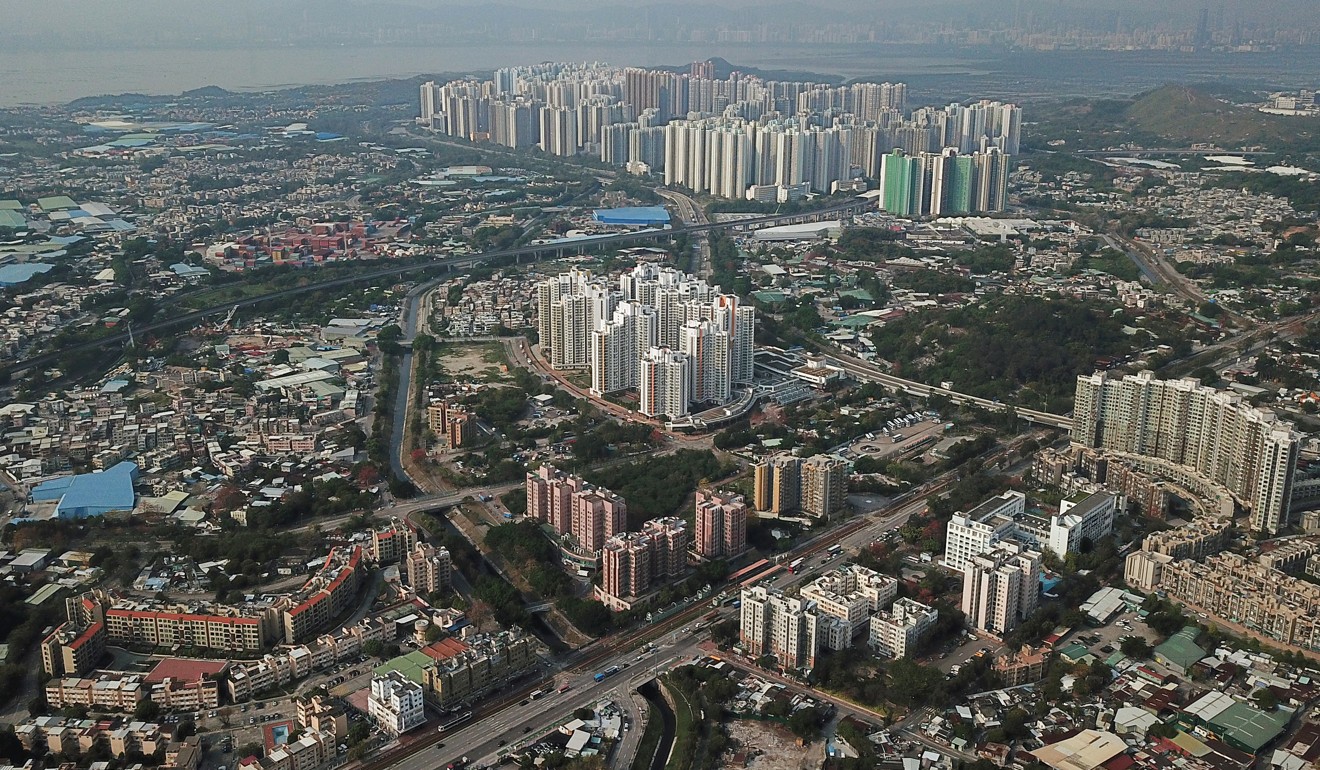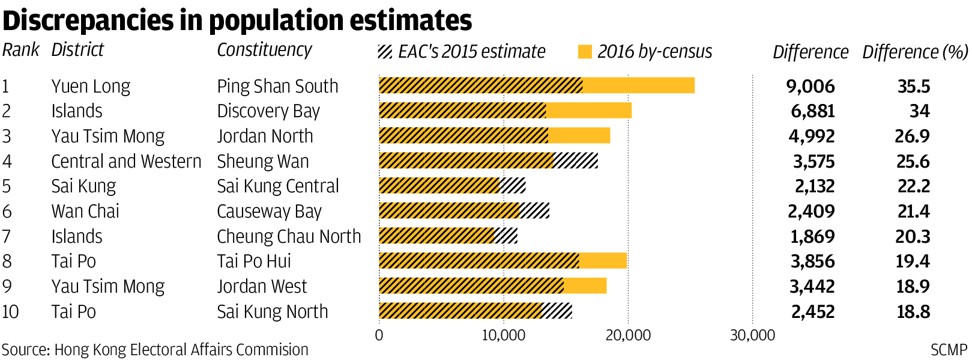
‘Baffling’ discrepancies found in population estimates for 2015 Hong Kong district council elections
Differences in authorities’ figures compared with official statistics spark concerns over projections for next polls and influence on voting patterns
Election authorities severely undercounted populations by as much as 36 per cent in the 2015 district council elections compared with what census data showed, raising concerns that smaller constituencies – presumably easier for the opposition to win – would be merged and “wiped off the map”.
The differences in numbers found by the Post sparked fears over inaccurate population forecasts by the Electoral Affairs Commission for the next election round in 2019.
Population estimates determine the rezoning of constituencies, which in turn can influence the re-election chances of political incumbents, as their supporters are moved across areas according to fresh boundaries drawn.
Election chiefs bring in 21 new district council seats, sparking gerrymandering concerns
The system has raised accusations of gerrymandering, especially from the opposition camp, who believe there is a political agenda behind the redrawing of the map. Authorities have denied this.
District councillors can also influence elections for Hong Kong’s next chief executive. Last year, they chose 117 representatives among them out of a total of 431 to vote for the city’s leadership, taking up about 10 per cent of the 1,194-strong Election Committee.
Out of 431 constituencies in the 2015 district council polls, 66 had discrepancies in population estimates of more than 10 per cent compared with census figures – a mark an analyst said was “baffling”.
Why redrawing map for Hong Kong district council elections is a bigger deal for opposition camp
By law, the commission has to review boundaries of district council constituencies and make recommendations to the chief executive ahead of an election.
The commission has to ensure that the population size of each constituency falls within a 25 per cent margin of difference from a quota calculated by dividing Hong Kong’s population by the number of constituencies.
They need to tell us how the maths is done
This quota was 16,964 in 2015, and calculated to be 16,599 for the 2019 district council elections, after a proposed redrawing of boundaries and the creation of new seats to take into account population growth.
Exceptions to the quota apply only when there are valid reasons, such as when there is a need to observe community identities.
When the Post compared the commission’s figures with by-census data collected between June and August 2016 – the closest available statistics following the estimates by the elections authority – discrepancies of up to 36 per cent were found.

In Ping Shan South in Yuen Long district, the commission underestimated a population of 16,337, when by-census data put it at 25,343.
On the other end, the commission overestimated by 27 per cent the population in Sheung Wan in Central and Western district. By-census statistics state a population of 13,975, but the commission estimated a figure of 17,550.
It was also found that there were discrepancies of more than 10 per cent in 66 areas, which amounted to 15 per cent of all 431 constituencies in the 2015 elections.
Young Hong Kong voters give by-election a miss in droves
Chinese University lecturer Leung Kai-chi said some discrepancies were “baffling”.
Leung said the current mechanism allowed the commission a lot of flexibility in making recommendations to redraw boundaries. “The 25 per cent margin itself is not necessarily a problem … A more fundamental issue is that they can disregard the population quota.”
A more fundamental issue is that they can disregard the population quota
Wan Chai district councillor Clarisse Yeung Suet-ying, who won the Tai Hang seat in 2015, also challenged the commission’s projection of 12,676 residents in the area by late 2019.
“There is no reason more than a thousand people should disappear,” she said, referring to the population of 14,515 in the 2016 by-census.
“They need to tell us how the maths is done.”

The commission has recommended some buildings in Tai Hang to be rezoned into the neighbouring Causeway Bay constituency.
It said population estimates across districts were made “based on the latest available official data”. “[They] were derived after a comprehensive data compilation process using a scientific and systematic methodology.”
According to the commission, a small group – which traditionally includes officials from seven other government bodies – chaired by the assistant director of the Planning Department is tasked with population estimates for each constituency.
In 2015, the group conducted the population forecast at the end of June. This was used by the commission in making recommendations to rezone constituencies ahead of the district council elections in November that year.

